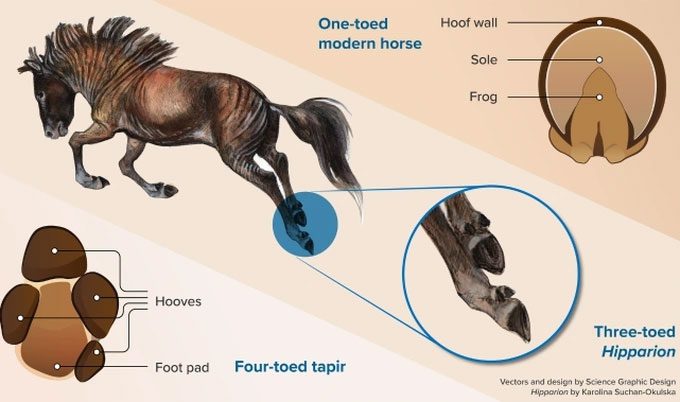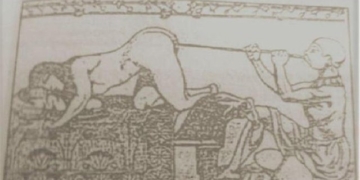Horses have undergone millions of years of evolution, transforming from a small multi-toed creature into the large, single-toed animals we see today.
The ancient ancestors of horses roamed across continents with toes and feet similar to many other animal species. However, after evolving through the ages, horses now possess a single, sturdy hoof that we recognize today.
According to a comprehensive analysis of horse history, scientists have dismissed the notion that horses’ toes were retained within their hooves. Instead, the toes actually disappeared through the process of evolution.
To reach this conclusion, scientists relied on perissodactyl fossils—a species of odd-toed ungulates believed to be the ancestors of modern horses.
In prehistoric times, this species had a complete foot with 4 toes in the front and 3 toes in the back, equipped with hooves and a pad underneath, resembling the tapir (Tapirus indicus). Today, however, the descendants of perissodactyls, including horses, donkeys, and zebras, have feet consisting of only 1 toe, surrounded by a hard yet flexible hoof.

Horses once had 4-toed feet but evolved to have a single toe. (Photo: Karolina Suchan-Okulska/Morales-García).
Research indicates that this anatomical change is considered an adaptation to life in open environments, enabling them to become more agile and powerful creatures.
Additionally, modern horses have evolved to have high-crowned molars and elongated noses, allowing for easier grazing, along with larger body sizes for better defense against natural predators.
Two other descendants of perissodactyls, the tapir and the rhinoceros, have only lost their fourth toe, now having 3-toed feet. They still manage to survive fairly well in the wild but cannot reach the speed and agility of horses.





















































